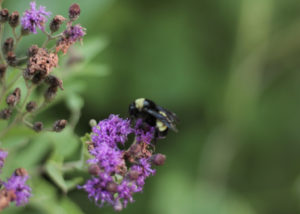I am my child’s first teacher. I am my child’s first teacher. (Repeat that phrase a couple more times.) So, when the topic first came up, around age five, about where babies come from, I have to be honest and say, I FROZE. I was in shock. But more than anything, I just was not prepared for it. So, I tiptoed around the subject and quickly brushed it off. In hindsight, that probably wasn’t the best idea. Here are a few definite DO’s and DON’Ts that got me through “sex talks” with my first child which will shape how I approach the subject with my other children.
 My oldest son was almost 10 when we had a “formal” talk about sex. Here’s the first “DON’T.”
My oldest son was almost 10 when we had a “formal” talk about sex. Here’s the first “DON’T.”
DON’T…
…wait until your child is a certain age. Every child will require different conversations at different times throughout childhood. But conversations should begin the first moment your child asks where babies come from. This is where I veered off course. Not only that, but YOU want to be the one having these conversations. You don’t want your child to learn about sex from their first grade counterpart or second grade peers. A lot of information (and misinformation) is out there, but YOU are your child’s first teacher. Does it mean that you have to go into a graphic detailed conversation? Well, it all depends on how curious your little one is. But more often than not, your child just wants to know logistically how that baby got in there. It’s fascinating to them and they want to know how that happened.
I’ve always wanted to be completely honest with my children (even though I was NOT prepared to talk about sex at any point) so here is the first “DO.”
DO…
…teach anatomically correct language for genitals. Starting at about age two, I’ve told my children (all boys, by the way) that the thing they’re flinging around in their diaper/pull up or whipping out to pee in the great outdoors is their penis. When they asked where my penis was—because inevitably toddlers follow you everywhere, the bathroom being one of the places—I would say it’s because mommy has a vagina instead of a penis. There should be no shame or humor in having these parts. We have arms, legs, a neck, a head, 10 fingers, 10 toes: it’s just a matter of fact. It is also (unfortunately) important to mention here that perpetrators of sexual violence against children are more likely to take advantage of a child who more commonly refers to these body parts as a “wee-wee” or “down there” because the child will be less likely to tell an adult if someone has touched her/him inappropriately.
Now that anatomically correct language is being used and all body parts are accounted for, let’s delve into the second “DON’T.”
DON’T…
…think that you have to tiptoe around the mechanics of the reproductive system. The same way that girls have a vagina and boys have a penis, there are some different internal things going on, too. When your child asks how the baby is inside of the woman’s belly, it’s important to let them know it’s really not in her belly at all. Why? Well, daddy has a belly but he can’t have a baby, only a mommy can. Instead, let your child know that women have something called a uterus in their body that men do not. This is where you start getting into the simple mechanics of it all. The sperm meets the egg (which is in the uterus) and a baby begins being formed.
Which brings me to the next “DO.”
DO…
…let your child guide the conversation. You don’t want to say too much if all they really want to know is something you’ve already covered. And if you’re not saying enough, your little one will keep asking for clarification. It’s important to approach any questions they have with honesty. You are your child’s first teacher, and on this topic, YOU want to be the expert. Because when you really think about it, who else is going to give them this information in the most honest of ways? No one.
It’s here where I share the last “DON’T” for this topic.
DON’T…
…be afraid to begin instilling your family values when having discussions with your child. At ages 4 to 6, your child just wants to know how a baby is physically in a woman’s body. That’s a very matter-of-fact conversation you’ll have. At around ages 6 to 9, your child may bring the topic up again with more questions, maybe even more difficult ones. Here’s where you have to have had some talks early on with your spouse about the values you’ll instill in your children. Will you teach your children abstinence, safe sex, sexual responsibility, body exploration, etc.? These conversations will be different for every family based on their core values. Because “the TALK” does not end once your child knows about how babies are made and how they are born.
And here is where I’ll end with the final “DO.”
DO…
…continue sexual conversations with your child. Since you are their first teacher, you will have to be prepared to continue building on their prior knowledge. Trust me, this is not a one time and done kind of thing. With all the information that is readily available on the world wide web, messages they see from TV/movies, lyrics they hear on the radio, and talks they have or hear from friends and peers, there WILL be plenty of things you’ll want to clarify for your children. YOU want to be the person your child feels comfortable going to with questions. YOU want to be the one who has the answers no matter if they are are 3-years-old or 13-years-old.
Be ready, because the question will come up.
Be honest.
Be approachable.
Be consistent.
And above all else, be loving in your approach.
Resources for Talking to Kids About Sex
Below are some resources I used when getting prepared for the sex talk with my oldest, and ones I’ll keep referring to when I have to continue these conversations with my other children:
Birds and Bees video series (<—was pretty much my guiding force through it all!)
Understanding the Facts of Life book by Susan Meredith
It’s Not the Stork! book by Robie H. Harris
It’s So Amazing! book by Robie H. Harris
It’s Perfectly Normal book by Robie H. Harris
The Talks book by Barrett & Jenifer Johnson













